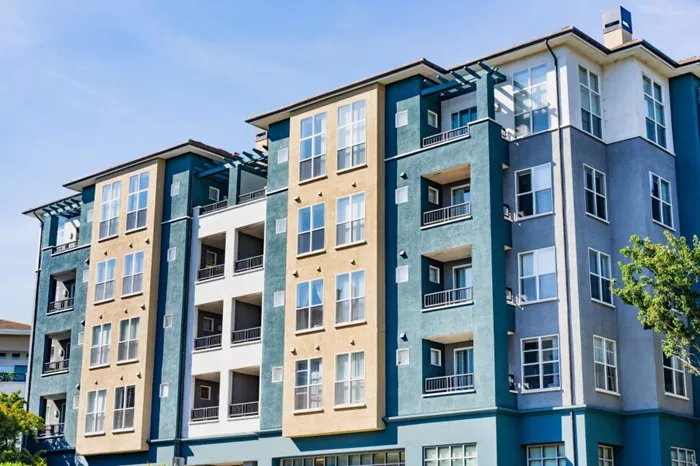Condo insurance is essential for protecting your investment and personal property, but determining the right amount of coverage can be challenging. This comprehensive guide will help you understand condo insurance, differentiate between the condo association’s master policy and your personal policy, assess your coverage needs, and consider additional coverage options. We will also discuss factors affecting the cost of condo insurance, the importance of comparing policies, and the need for regular policy reviews.
Understanding Condo Insurance
Condo insurance, also known as HO-6 insurance, is designed specifically for condominium owners. It provides coverage for personal property, liability, and certain parts of the condo unit itself, unlike standard homeowners insurance, which typically covers the entire structure and the land it sits on. Condo insurance fills the gaps left by the condo association’s master policy and offers protection tailored to the unique needs of condo owners.
Master Policy vs. Personal Policy
Master Policy: The condo association’s master policy covers the building’s common areas, exterior structure, and sometimes the interior structure of individual units. There are two main types of master policies:
Bare Walls-In: Covers the building’s structure and common areas but does not include the interiors of individual units.
All-In: Covers the building’s structure, common areas, and sometimes the interior fixtures, installations, and improvements of individual units.
Personal Policy: Your personal condo insurance policy covers your personal belongings, interior improvements, and personal liability. It supplements the master policy by providing protection for areas and items not covered by the association.
Determining Coverage Needs
Assessing the right amount of coverage for your condo insurance involves evaluating several factors:
Personal Property: Inventory your personal belongings, including furniture, electronics, clothing, and other valuables. Estimate their total value to determine the amount of personal property coverage needed.
Master Policy Review: Understand what the master policy covers and identify gaps. This will help you determine the amount of dwelling coverage and additional coverage you may need.
Interior Improvements: Consider the value of any upgrades or improvements you have made to your unit, such as custom cabinetry, built-in appliances, or high-end fixtures.
Special Assessments: Some policies offer coverage for special assessments levied by the condo association to cover losses or damages to common areas.
Dwelling Coverage
Dwelling Coverage: This part of your policy covers the interior structure of your unit, including walls, floors, ceilings, and any improvements or upgrades. The appropriate amount of dwelling coverage can be calculated by considering the cost to repair or replace these elements.
Consult Professionals: Work with an architect, contractor, or interior designer to estimate the cost of rebuilding or repairing your unit’s interior.
Replacement Cost vs. Actual Cash Value: Choose between replacement cost coverage, which pays to repair or replace items at current prices, and actual cash value coverage, which factors in depreciation.
Liability Coverage
Liability Coverage: This protects you if someone is injured in your condo or if you accidentally damage someone else’s property. It also covers legal fees and medical payments.
Recommended Amount: A baseline amount for liability coverage is typically around $300,000, but higher amounts may be advisable depending on your financial situation and potential risks.
Umbrella Policy: Consider an umbrella policy for additional liability coverage if you have significant assets or higher risks.
see also: Mobile Home Insurance Cost And Coverage In 2024
Additional Coverage Options
Additional Coverage Options: Standard condo insurance policies may not cover certain perils. Consider additional coverage for the following:
Flood Insurance: Standard policies typically do not cover flood damage. If you live in a flood-prone area, consider purchasing a separate flood insurance policy.
Earthquake Insurance: Earthquake coverage is also generally excluded from standard policies. If you live in an area prone to earthquakes, consider adding this coverage.
Water Backup Coverage: Protects against damage caused by water backing up from sewers or drains.
Loss Assessment Coverage: Covers your share of special assessments levied by the condo association for covered losses to common areas.
Cost Factors
Several factors affect the cost of condo insurance, including:
Location: Premiums vary based on the location of your condo. Areas prone to natural disasters or high crime rates typically have higher premiums.
Coverage Amount: The more coverage you purchase, the higher your premium will be. This includes personal property, dwelling, and liability coverage.
Deductible: A higher deductible can lower your premium but increases your out-of-pocket costs in the event of a claim.
Building Characteristics: The age, construction type, and safety features of your building can impact your insurance rates.
Claims History: A history of frequent claims can result in higher premiums.
see also: How Much Does Home Insurance Cost A Year?
Policy Comparison
Comparing different policies and insurers is crucial to finding the best coverage for the best price. Here’s how to approach it:
Get Multiple Quotes: Obtain quotes from several insurance companies to compare coverage options and prices.
Evaluate Coverage: Ensure that each policy offers comparable coverage levels, deductibles, and exclusions.
Check Insurer Reputation: Research the financial stability and customer service ratings of the insurers. Look for reviews and ratings from independent agencies like A.M. Best or J.D. Power.
Discounts: Ask about discounts for things like bundling with other insurance policies, installing safety features, or maintaining a claims-free history.
Regular Policy Review
Regularly reviewing and updating your policy ensures that you maintain adequate coverage as circumstances change:
Annual Review: Reevaluate your coverage needs annually or after significant life events, such as renovations, purchasing high-value items, or changes in your financial situation.
Update Coverage: Adjust your coverage limits based on the current value of your personal property and any changes in the master policy.
Check for New Discounts: Ask your insurer about any new discounts or policy features that could benefit you.
Conclusion
Determining how much condo insurance you need involves understanding your policy, assessing your coverage needs, and regularly reviewing your policy to ensure it remains adequate. By considering factors like personal property value, dwelling coverage, liability needs, and additional coverages, you can tailor a policy that provides comprehensive protection. Comparing different policies and insurers and staying informed about your coverage can help you find the best protection for your condo at the best price.
FAQs about Home and Condo Insurance Policies
1. What Is the HO-4 Policy?
The HO-4 policy, also known as renters insurance, is designed specifically for tenants who rent an apartment, house, or condo. This policy provides coverage for:
Personal Property: Protects your belongings against risks like fire, theft, vandalism, and certain types of water damage.
Liability: Covers you if you are held liable for injuries to others or damage to their property. This includes legal fees and medical expenses.
Additional Living Expenses (ALE): If your rental unit becomes uninhabitable due to a covered loss, ALE covers the cost of temporary housing, meals, and other living expenses.
Medical Payments: Covers medical expenses for guests injured in your rental unit, regardless of fault.
HO-4 policies do not cover the structure of the building itself, as that is the responsibility of the landlord’s insurance.
2. What Is HO-3 Insurance?
The HO-3 policy, also known as a special form policy, is the most common type of homeowners insurance. It provides coverage for:
Dwelling: Protects the structure of your home against all perils except those specifically excluded (like floods, earthquakes, and certain types of water damage).
Other Structures: Covers detached structures on your property, such as garages, sheds, and fences.
Personal Property: Provides coverage for your belongings against specific named perils like fire, theft, and vandalism.
Liability: Covers you if you are held liable for injuries to others or damage to their property, including legal fees and medical expenses.
Additional Living Expenses (ALE): Covers the cost of temporary housing, meals, and other living expenses if your home becomes uninhabitable due to a covered loss.
Medical Payments: Covers medical expenses for guests injured on your property, regardless of fault.
HO-3 policies offer broad protection for your home and personal property, making them a popular choice for homeowners.
3. What Is the Average Cost of Condo Insurance in California?
The average cost of condo insurance in California varies based on factors such as the location, coverage amount, deductible, and the insurer. On average, condo insurance (HO-6 policy) in California costs between $300 and $600 per year. Key factors that influence the cost include:
Location: Areas prone to natural disasters like earthquakes or wildfires may have higher premiums.
Coverage Limits: Higher coverage limits for personal property and liability increase the premium.
Deductible: Choosing a higher deductible can lower your premium, while a lower deductible increases it.
Building Features: The age, construction type, and safety features of the condo building can affect the cost.
4. What Is the Average Cost of Condo Insurance in Florida?
The average cost of condo insurance in Florida is generally higher than in many other states due to the risk of hurricanes and flooding. On average, condo insurance (HO-6 policy) in Florida costs between $500 and $1,000 per year. Factors influencing the cost include:
Location: Proximity to the coast and areas prone to hurricanes and flooding can significantly increase premiums.
Coverage Limits: Higher coverage limits for personal property and liability result in higher premiums.
Deductible: Opting for a higher deductible can reduce the premium, while a lower deductible increases it.
Building Features: The age, construction type, and safety features of the condo building, as well as any mitigation measures for hurricane damage, can impact the cost.
You Might Be Interested In




















